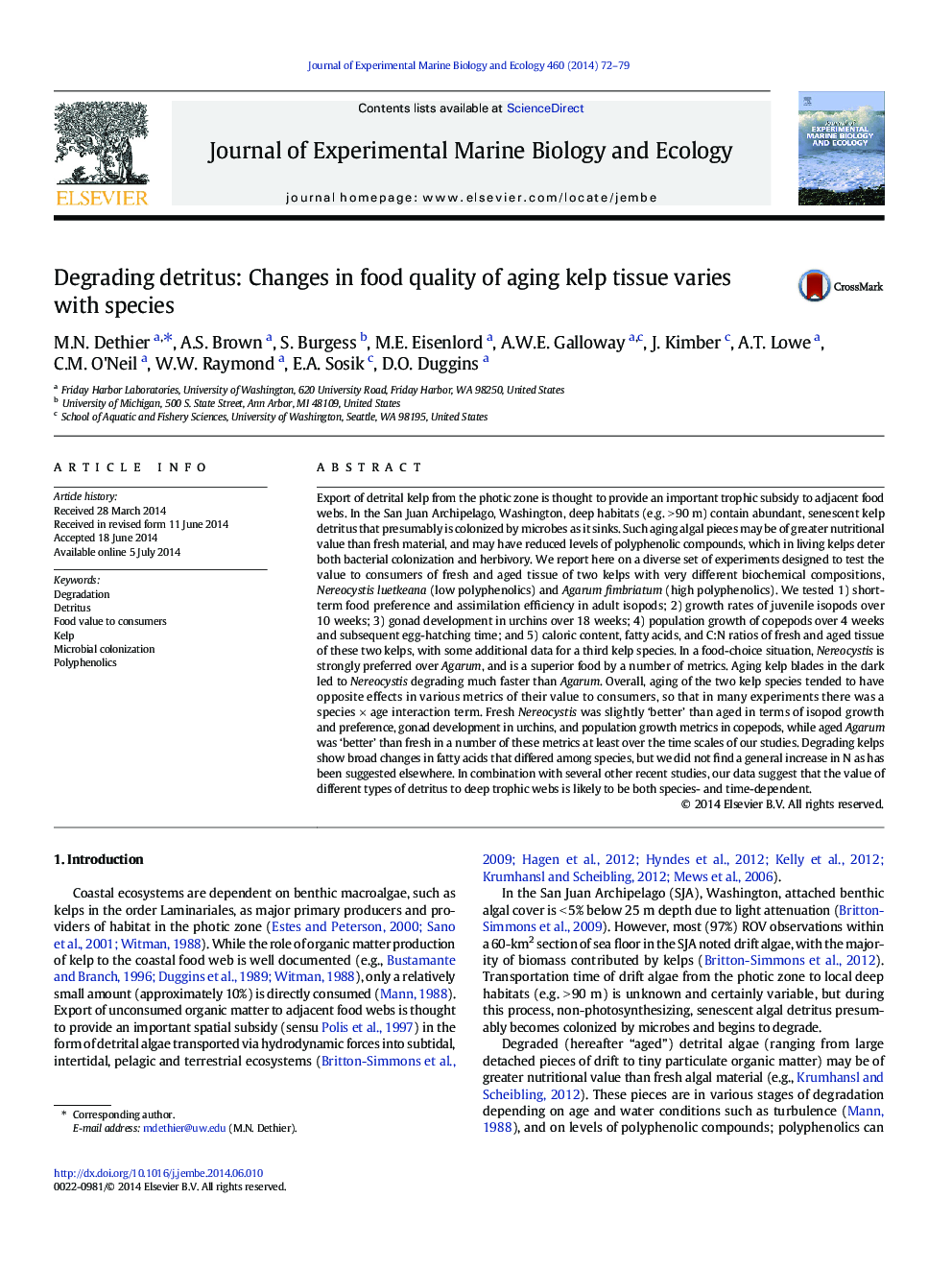| کد مقاله | کد نشریه | سال انتشار | مقاله انگلیسی | نسخه تمام متن |
|---|---|---|---|---|
| 6304059 | 1618415 | 2014 | 8 صفحه PDF | دانلود رایگان |

- Kelp detritus degrades as it sinks into deep water.
- Physical, biochemical, and microbial changes may alter food value of this detritus.
- A chemically defended kelp degrades differently than an undefended one.
- Diverse experiments suggest the food value of the 2 kelps changes in opposite ways.
- The value of the kelp subsidy to deep water depends on both species and time.
Export of detrital kelp from the photic zone is thought to provide an important trophic subsidy to adjacent food webs. In the San Juan Archipelago, Washington, deep habitats (e.g. > 90 m) contain abundant, senescent kelp detritus that presumably is colonized by microbes as it sinks. Such aging algal pieces may be of greater nutritional value than fresh material, and may have reduced levels of polyphenolic compounds, which in living kelps deter both bacterial colonization and herbivory. We report here on a diverse set of experiments designed to test the value to consumers of fresh and aged tissue of two kelps with very different biochemical compositions, Nereocystis luetkeana (low polyphenolics) and Agarum fimbriatum (high polyphenolics). We tested 1) short-term food preference and assimilation efficiency in adult isopods; 2) growth rates of juvenile isopods over 10 weeks; 3) gonad development in urchins over 18 weeks; 4) population growth of copepods over 4 weeks and subsequent egg-hatching time; and 5) caloric content, fatty acids, and C:N ratios of fresh and aged tissue of these two kelps, with some additional data for a third kelp species. In a food-choice situation, Nereocystis is strongly preferred over Agarum, and is a superior food by a number of metrics. Aging kelp blades in the dark led to Nereocystis degrading much faster than Agarum. Overall, aging of the two kelp species tended to have opposite effects in various metrics of their value to consumers, so that in many experiments there was a species Ã age interaction term. Fresh Nereocystis was slightly 'better' than aged in terms of isopod growth and preference, gonad development in urchins, and population growth metrics in copepods, while aged Agarum was 'better' than fresh in a number of these metrics at least over the time scales of our studies. Degrading kelps show broad changes in fatty acids that differed among species, but we did not find a general increase in N as has been suggested elsewhere. In combination with several other recent studies, our data suggest that the value of different types of detritus to deep trophic webs is likely to be both species- and time-dependent.
Journal: Journal of Experimental Marine Biology and Ecology - Volume 460, November 2014, Pages 72-79